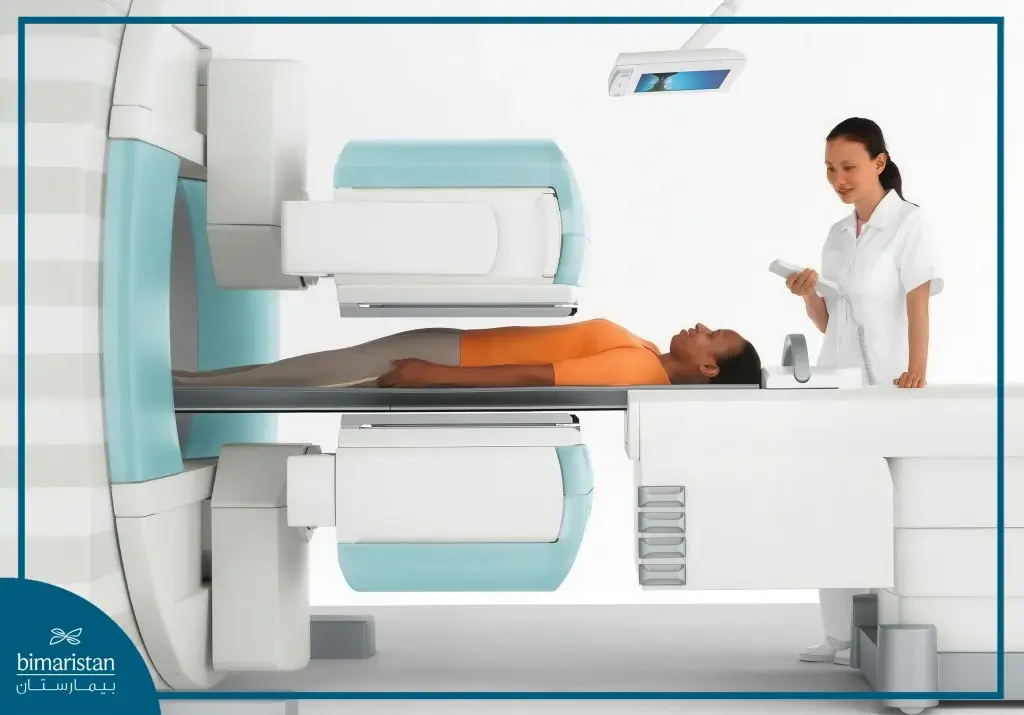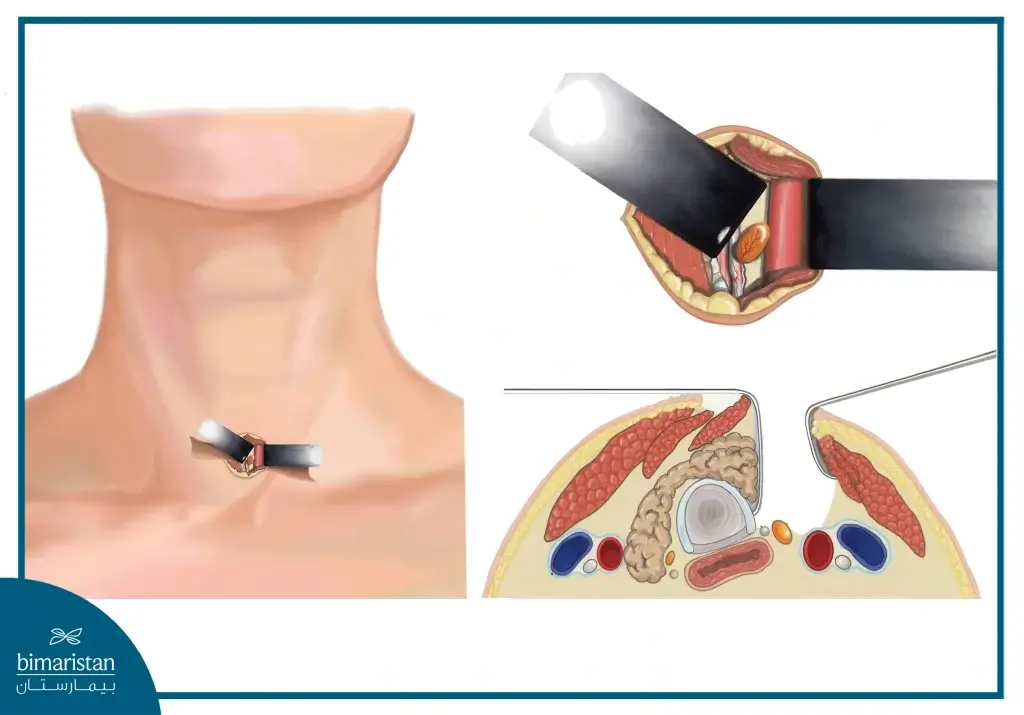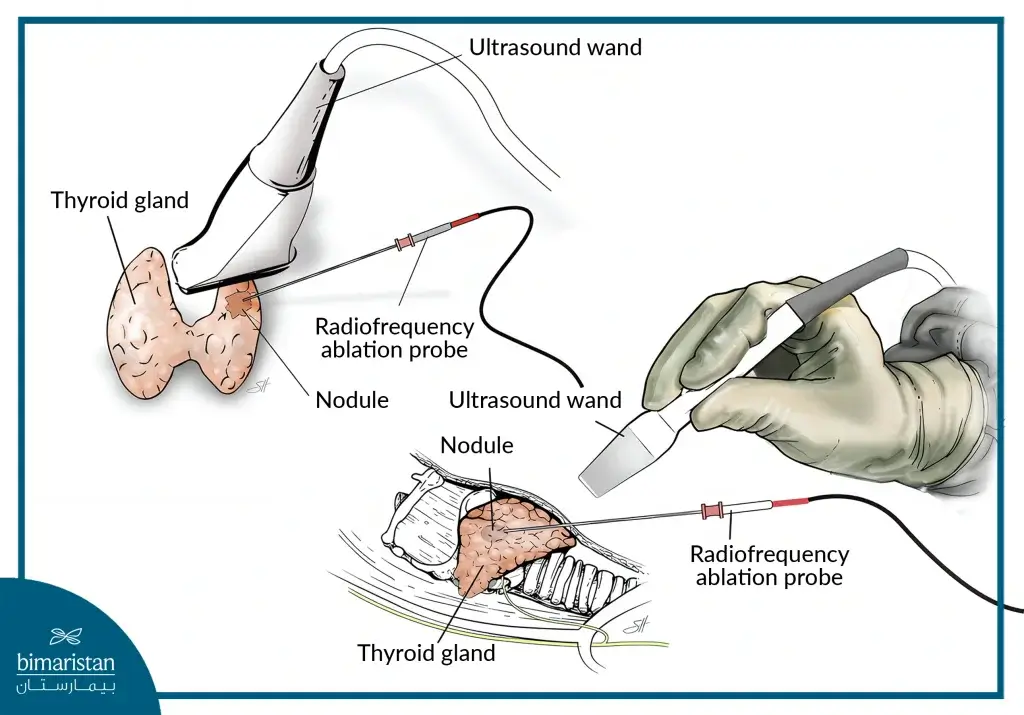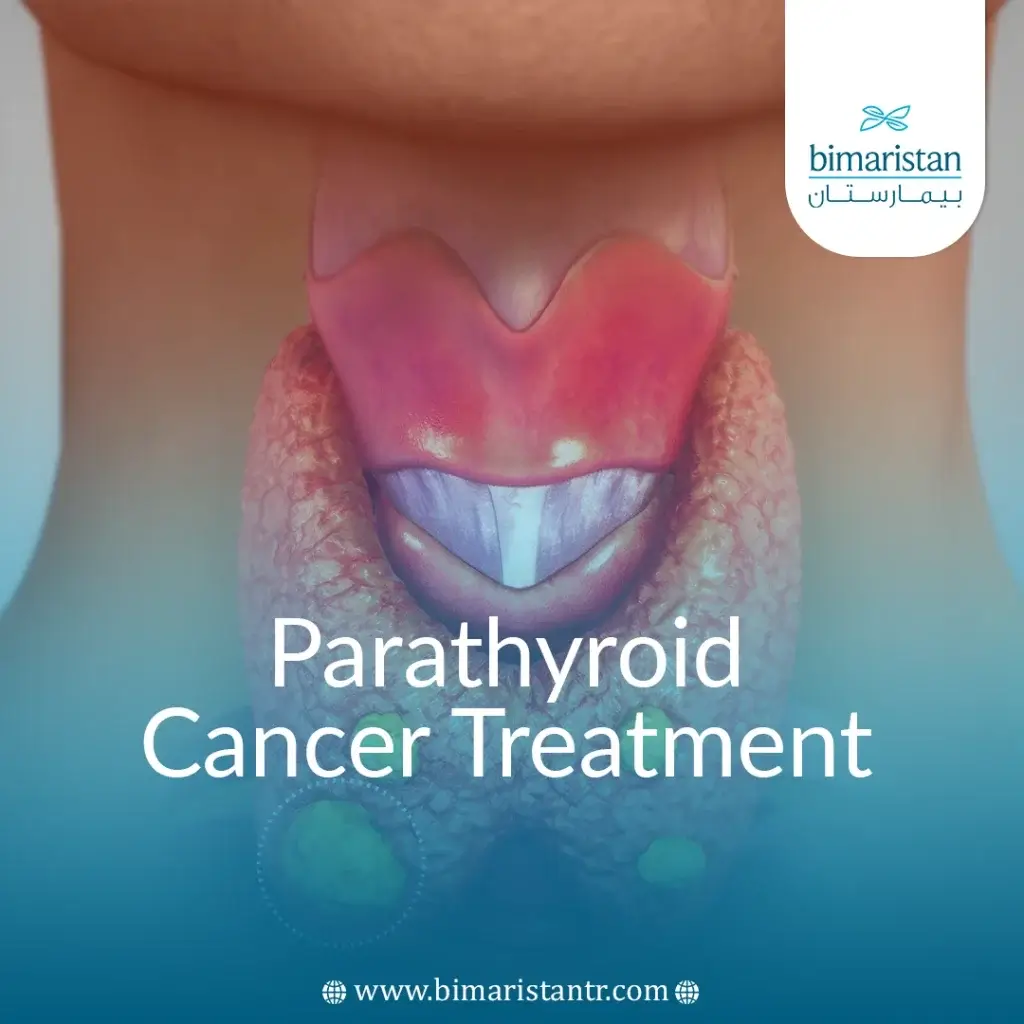Parathyroid gland cancer is extremely rare, with an incidence rate of 0.005% of all cancer cases. According to medical literature, only about 1,000 cases of this type have been documented, highlighting the importance of awareness and ongoing research about this rare health condition.
Most people with parathyroid cancer are in their mid-forties, and it can affect both men and women, being slightly more common in women. In this article, learn about the causes, symptoms, and Parathyroid cancer treatment in Turkey.
What is parathyroid cancer?
Parathyroid gland cancer is rare and develops in the gland’s tissues. The cancer begins when changes occur in the DNA of the gland’s cells. These cells grow and divide abnormally (mutate) and rapidly, forming a mass known as a tumor. Subsequently, the mutated cells invade nearby areas, such as the lymph nodes in the neck, creating what is known as metastasis. These cells can also spread to other parts of the body, such as the lungs and bones, which is called malignancy or cancer.
Primary hyperparathyroidism is a medical condition resulting from cancers in the parathyroid gland. One or more adenomas may cause hyperparathyroidism. Studies indicate that a single parathyroid adenoma is the leading cause in about 85% of cases, while two adenomas contribute to about 4% to 5% of cases. In contrast, four adenomas are attributed to 10% to 12% of hyperparathyroidism cases.
What are the types of parathyroid cancer?
There are two main types of parathyroid cancer. The most common type causes cancerous cells to increase the production and secretion of parathyroid hormone (PTH), leading to elevated calcium levels in the blood.
The other type is known as non-functioning or non-secreting parathyroid gland cancer. This form differs from the common type in that patients with non-functional cancer do not experience elevated levels of PTH or calcium in the blood. The non-functional type is considered rare and represents less than 10% of all cases of parathyroid gland cancer.
What are the causes of parathyroid cancer?
The causes of parathyroid gland cancer are not precisely known, and it is believed that about 10% of cases have a hereditary origin, being inherited from parents. Among the main genetic syndromes associated with parathyroid cancer, the most notable are:
- Multiple Endocrine Neoplasia (MEN) I
- Multiple Endocrine Neoplasia (MEN) IIA
- Isolated Familial Hyperparathyroidism
There are also non-genetic factors that contribute to an increased risk of parathyroid gland cancer, including:.
- Long-term hyperparathyroidism, especially with chronic kidney failure
- Exposure to radiation in the head and neck area during childhood or young adulthood
- Exposure to high doses of radiation from nuclear power plants
- Long-term calcium deficiency in the diet
Although these factors may increase the risk of parathyroid gland cancer, there is no guarantee that anyone will develop this cancer even if they have the mentioned risk factors. In case of any doubt or concern, consulting a healthcare specialist is important. Regular medical check-ups and early diagnosis also play a crucial role in detecting the presence of the disease.
What are the symptoms of parathyroid cancer?
High calcium levels in the blood mainly cause the symptoms of parathyroid cancer, and the main symptoms include:
- Bone pain
- Constipation
- Fatigue and general weakness
- Frequent thirst and increased urination
- Kidney stones
- Muscle weakness
- Nausea and vomiting
- Confusion
- Lack of energy (lethargy)
It is important to note that many people may not exhibit symptoms, and the condition is often discovered during blood tests for other medical reasons. A person may not realize they have hypercalcemia until it is detected during routine blood examinations.
How is parathyroid cancer diagnosed?
The doctor initially performs a comprehensive physical examination and asks the patient about their medical history. In nearly half of the cases, the physical exam can reveal the presence of a tumor in the parathyroid gland.
In most cases, the cancer is of the secreting type, leading to the production of large amounts of parathyroid hormone (PTH) and elevated calcium levels in the blood. In rare cases, some instances may be of the non-secreting type and may be misdiagnosed as thyroid cancer.
Diagnosing parathyroid cancer can be complex, as it may not be recognized until months or years after the disease recurs. The main diagnostic tests include:
- Blood and urine tests: reveal elevated levels of calcium and PTH.
- Imaging tests: such as X-rays, ultrasound, CT scans, and MRI, to determine the size and location of the tumor.
- Single Photon Emission Computed Tomography (SPECT): used to determine the activity of the parathyroid gland by injecting a radioactive substance into the bloodstream.

After confirming the diagnosis of parathyroid cancer, additional tests, such as a biopsy, may be required to determine the stage of the cancer and its extent, which helps in devising an appropriate treatment strategy.
What is Parathyroid cancer treatment?
The Parathyroid cancer treatment involves highly precise procedures. The treatment depends on the stage of the disease and the patient’s overall health condition, as a multidisciplinary medical team collaborates to determine the most suitable options. The main Parathyroid cancer treatment options include:
Surgical Parathyroid cancer treatment
Surgery is the first choice for Parathyroid cancer treatment. Due to the slow spread of the cancer, parathyroid cancer can be surgically treated even after it has spread to other parts of the body. The parathyroid glands can be surgically removed in several ways, including:
- Total removal: This surgical procedure aims to remove the parathyroid gland and its surrounding capsule completely. In some cases, removing lymph nodes and half of the thyroid gland on the affected side may also be necessary, in addition to muscles, tissues, and nerves in the neck area.
- Tumor debulking: This surgical procedure removes as much of the tumor as possible. It is important to note that some tumors may not be completely resectable.
- Metastasis removal: This surgical procedure removes cancer that has spread to distant organs, such as the lungs.
Before performing surgical resection, it is essential to adjust the calcium levels in the blood.

Radiation therapy for Parathyroid cancer treatment
Although it is not the first choice for Parathyroid cancer treatment, radiation therapy may be used after surgery to enhance Parathyroid cancer treatment effectiveness and reduce the risk of cancer recurrence. High-energy X-rays or other types of radiation are used to kill cancer cells or limit their spread. There are two types of radiation therapy:
- External radiation therapy: Uses a machine outside the body to direct radiation toward the affected area to treat parathyroid cancer.
- Internal radiation therapy: Uses radioactive material placed in needles, seeds, wires, or catheters that are inserted directly into or near the cancer.
The choice of radiation treatment for parathyroid cancer depends on the type and stage of the cancer being treated. Studies indicate that external beam radiation therapy does not have a significant impact on increasing survival rates. Radiation therapy requires prior preparation, and some side effects may occur, such as pain when swallowing, dry mouth, and changes in taste.
Chemotherapy for Parathyroid cancer treatment
Suppose surgery cannot be performed for any reason. In that case, medications can be used to stop the growth of cancer cells by killing them or preventing them from dividing, thereby reducing parathyroid hormone and calcium levels. The Chemotherapy for Parathyroid cancer treatment can be taken either orally or through an injection that may be intravenous or intramuscular, depending on the type and stage of the cancer being treated. The drugs enter the bloodstream and reach cancer cells throughout the body. Among the drugs used is cinacalcet (Mimpara).
Radiofrequency for Parathyroid cancer treatment
Radiofrequency is sometimes used for Parathyroid cancer treatment, a minimally invasive medical procedure that treats metastatic cancer. The location is determined using ultrasound waves, allowing for a focus solely on the targeted area. The doctor uses a radiofrequency generator to carefully direct a specific amount of energy through the electrode to the tissue to remove the targeted cancerous cells. The heat generated from radiofrequency ablation damages the cells, allowing the body to eliminate the deteriorated tissue as waste over several months naturally.

Some substances may be given to the patient to alleviate issues resulting from the disease or one of its treatments, such as:
- Intravenous (IV) fluids
- Diuretics
- Medications that prevent the body from absorbing calcium
- Medicines that prevent the parathyroid gland from producing the parathyroid hormone.
After Parathyroid cancer treatment
Follow-up after Parathyroid cancer treatment is crucial to ensure the patient’s health and monitor for any recurrence of the disease or potential complications. The monitoring process primarily includes measuring calcium and parathyroid hormone levels and other analyses and tests, as these measurements are essential for assessing health status.
A significant decrease in calcium and phosphate levels indicates the success of the Parathyroid cancer treatment, known as Hungry Bone Syndrome. If there is an observed increase in calcium or parathyroid hormone levels, the patient should consult a specialist, as this increase may indicate a possibility of tumor recurrence.
The follow-up plan includes blood tests and ultrasound examinations of the neck area, and these appointments may continue for several years, as parathyroid cancer is a rare disease that is commonly recurrent.
What are the complications of parathyroid cancer treatment?
Surgery for parathyroid cancer results in several side effects, which may include:
- Hoarseness or changes in voice due to damage to the nerve responsible for controlling the vocal cords (recurrent laryngeal nerve)
- Infection at the surgical site
- Low blood calcium levels (hypocalcemia), a potentially life-threatening condition that may present as tremors or even seizures
- Scarring
Chemotherapy and radiation treatment for parathyroid cancer can also damage normal cells, leading to complications such as hair loss, mouth sores, and vomiting.
Be sure to inform your medical team about any side effects you experience, as there may be procedures and medications that can help reduce and manage them.
Life Expectancy for Parathyroid Cancer Treatment Patients
The five-year survival rate ranges between 78% and 85%, decreasing to 49% to 70% over ten years. More than half of individuals diagnosed with parathyroid cancer who undergo surgery to remove the gland experience cancer recurrence. In these cases, cancer often returns two to five years after the initial surgery, but it can recur after decades.
How is Parathyroid Cancer Prevented?
Unfortunately, there is no known way to prevent parathyroid cancer, and the risk of developing this disease cannot be reduced. If there is a family history of parathyroid gland diseases, it is essential to inform your doctor.
When should you contact your doctor?
Ask your doctor to inform you when you should contact them. You may be asked to reach out if you experience:
- New symptoms or worsening symptoms
- Signs of infection such as fever
- Side effects of treatment that affect your daily life or do not improve with treatment
Inquire with your doctor about the signs to watch for and when to contact them.
Parathyroid gland cancer is a rare health condition that requires awareness and early screening to avoid complications. It is essential to consult specialized doctors to determine appropriate treatment options and ensure regular follow-up for patient health. Maintaining a healthy lifestyle can help improve outcomes and reduce risks.
Sources:
